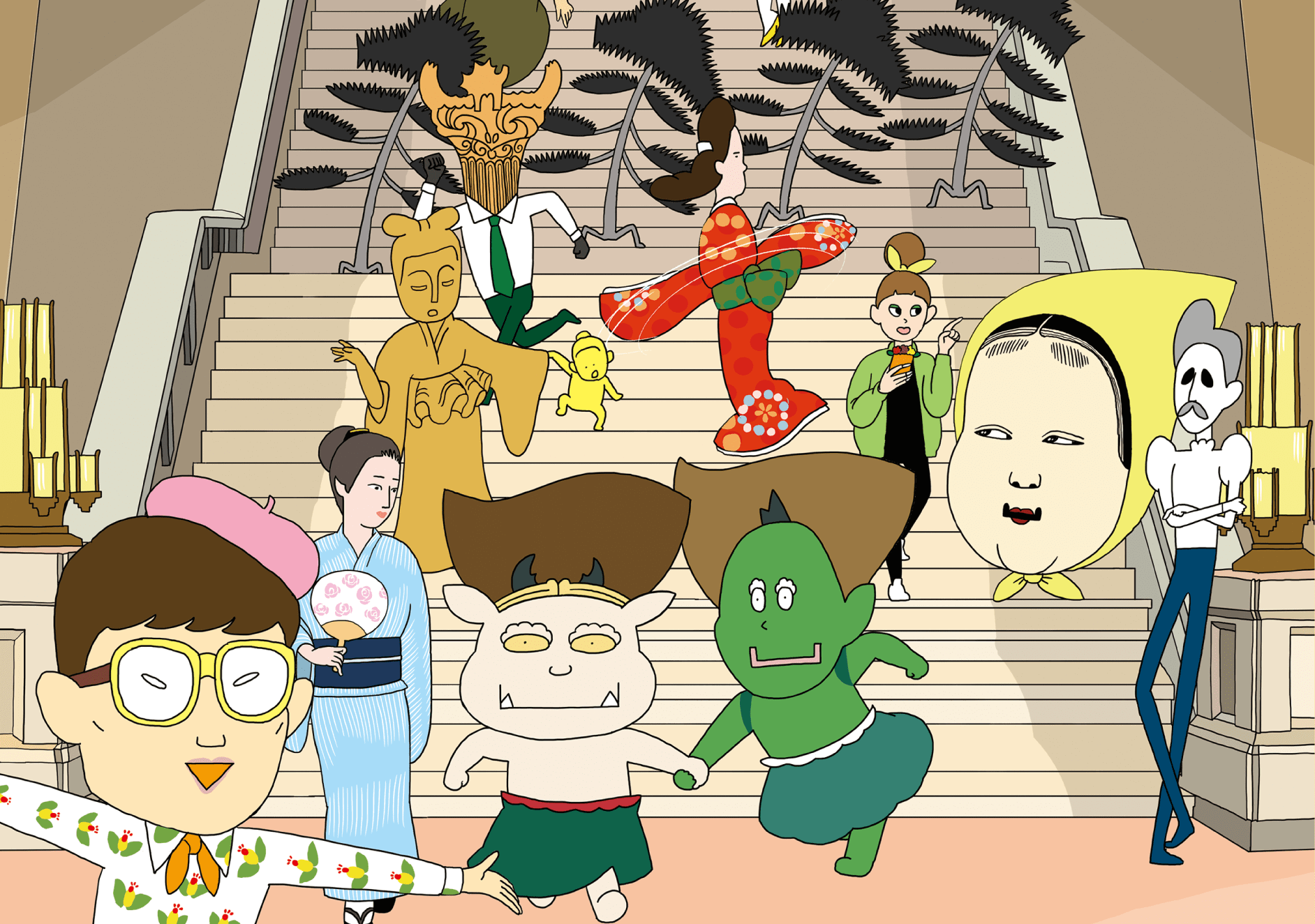
Tokyo National Museum [Ueno park]
This unique exhibition space uses exact replicas and innovative video technology to create an immersive environment where visitors can actually “become” famous works of Japanese art. The works on display have all been featured on “Art Tunes!” —an NHK Educational TV show that introduces art from around the world through imaginative original songs and cartoons by the artist Inoue Ryo. After a successful first round in 2018, this exhibition now makes its triumphant return to the Tokyo National Museum (TNM) featuring all new works of art and all new ways to interact with them. “Art Tunes!” is a show on NHK Educational TV that introduces art from around the world in an easy-to-understand way through original songs and animations. The Wind God and Thunder God got along splendidly when they first met. But now, they sometimes have gloomy days clouded Important Cultural PropertyWind God and Thunder GodBy Ogata Korin, Edo period, 18th century Important Cultural PropertyFlowering Plants of Summer and AutumnBy Sakai Hoitsu, Edo period, 19th century “Art Tunes!” A Secret between Two Gods ©NHK・井上涼2020 Venue image Use of this piece was made possible through collaboration between the National Institutes for Cultural Heritage and Canon Inc. as part of their "Joint-Research Project on the Utilization of High-resolution Facsimiles of Cultural Properties." This ink painting depicts a pine grove with snow-covered mountains visible in the distance. Today, it comes to life in a special performance only at TNM. National TreasurePine TreesBy Hasegawa Tohaku, Azuchi-Momoyama period, 16th century “Art Tunes!” The Pine Tree Dancers ©NHK・Inoue Ryo2020 Venue image Use of this work was made possible through collaboration between the National Institutes for Cultural Heritage and Canon Inc. as part of their "Joint-Research Project on the Utilization of High-resolution Facsimiles of Cultural Properties." Outside, bridges and irises wrap around the box. National TreasureWriting Box with the Eight-Plank BridgeBy Ogata Korin, Edo period, 18th century “Art Tunes!” Welcome to YATSUHASHI Writing Box ©NHK・Inoue Ryo2020 Venue image Make a design using iris leaves and flowers, bridge planks, and flowing water as your design elements. Venue image Japanese GalleryHonkan Heiseikan The Gallery of Horyuji Treasures Kuroda Memorial Hall Important Cultural Property This work was painted by Sakai Hoitsu on the reverse side of 'Wind God and Thunder God', a folding-screen painting by Ogata Korin. It was removed from the back of Korin's painting in 1974 and the two works are now mounted on separate screens. Noh Mask: Ko’omotePassed down by the Uesugi clan Signed "Nagai This mask was worn for the roles of young women. The original on which it is based was so popular that numerous copies of it were produced over the centuries. National Treasure Long Sword (Tachi), This tachi long sword has a strong curvature and slim shape. Another striking feature is the intricate complexity of the tempering pattern that sits gleaming between the black ground metal and the white blade edge. A glance above the temper pattern reveals a shiny crescent-moon-shaped pattern. The Japanese word for crescent moon is “mikazuki,” which explains why the sword is named “Mikazuki Munechika.” Munechika was a swordsmith said to have lived in Kyoto's Sanjo district during the late Heian period. Hardly any of his swords are still with us today. This sword was once owned by the wife of Toyotomi Hideyoshi, a 16th century warlord who unified Japan. It was later bequeathed to the second Tokugawa shogun, Tokugawa Hidetada, and it was subsequently passed down through the Tokugawa family. National Treasure Writing Box with the Eight-Plank BridgeBy Ogata Kōrin | Edo period, 18th century National Treasure Pine TreesBy Hasegawa Tōhaku | Azuchi-Momoyama Using only powerful brush strokes with different shades of ink, the artist has depicted pine trees looming amongst the mist. This is a masterpiece by Hasegawa Tohaku, one of the foremost painters of the Azuchi-Momoyama period. Important Cultural Property This unusual work depicts the moment Maya gave birth to the child who would become the Buddha. As queen of the Shakya clan, she visited a garden called Lumbini Grove when she was still pregnant. There she grasped a branch of a flowering Ashoka tree, and in that moment, her child was born, emerging from Maya’s right side. He is said to have immediately taken seven steps, and then declared that he had been born to save all the people of the world. One tradition tells that the gods Brahma and Sakra then poured aromatic water over Siddhartha and washed his body. Important Cultural Property LakesideBy Kuroda Seiki, 1897(Meiji 30) 画像提供:東京文化財研究所 This painting depicts a beautiful woman in a yukata (informal cotton kimono) sitting by a lakeside with an uchiwa (a round fan) in her hand. This woman is Taneko Kaneko (later her name was changed to Teruko), who would become the wife of Seiki Kuroda. According to Mrs. Kuroda's recollection, when they visited Hakone, Kuroda asked Teruko to sit for him as he saw her sitting on a rock by Lake Ashi (Ashinoko). Lake Ashi at the time was a popular summer resort among foreigners and this painting was initially titled "Summer Resort." National Treasure Scenes In and Around Kyoto (Funaki version) By Iwasa Matabei, Edo period, 17th century This is a set of two six-panel folding screens. It depicts central Kyoto as seen from the south. The two screens are connected by a river that flows diagonally towards the bottom right. This is Kamo River, which flows north to south through the eastern part of Kyoto. To the west of the river in the left section, lies the city center, while the suburbs lie to the east of the river on the right. The large building on the far right is the Daibutsu-den, or the Great Buddha Hall, of Hoko-ji Temple. Nijo Castle is drawn to the far left. Adults: 1,000 yen * Entry to most special exhibitions requires a package ticket that is priced separately.Welcome to Becoming Japanese Art—Round Two!
Just like last time, the best way to enjoy your visit today is to throw away your inhibitions and let yourself “become” the art—you can do this by imagining you are one of the characters in the art or that you have been magically transported into the artwork itself.
As the oldest institution of its kind in Japan, many of the works in the Museum’s collection have inspired original songs and cartoons for Art Tunes! When you are finished here, you can go see the original masterpieces in the Museum’s galleries. Whether you are a long-time fan of “Art Tunes!”, or just hearing about it for the first time today, the beauty and power of art is sure to captivate your imagination.“Art Tunes!” What is it?
The music, lyrics, and animation are all created by the artist Inoue Ryo. Vivid images, warm, funny lyrics, and catchy melodies come at you one after another. Inoue’s unique interpretations of art will capture your heart. From kids to adults, the show is sure to make anyone who watches want to check out the featured works.
Make friends with art through this new program, airing weekly on Wednesdays at 7:50 p.m.Highlights of the Exhibition
A Pair of Dates on the Front and Back of a Folding Screen
by fighting…
The two gods go on dates on the front and back sides of their folding screen, which share a hidden connection. When a crack of thunder sounds out on the front side, what happens on the back?
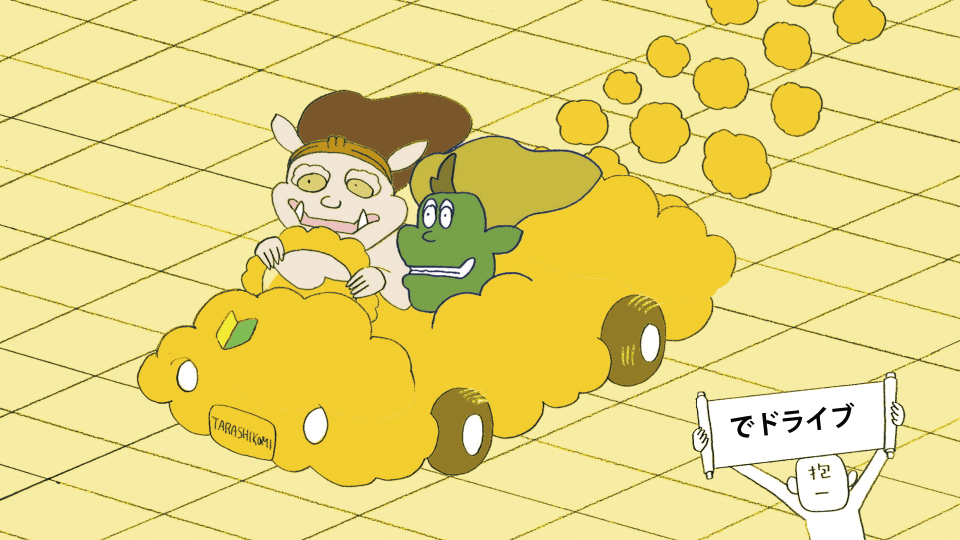
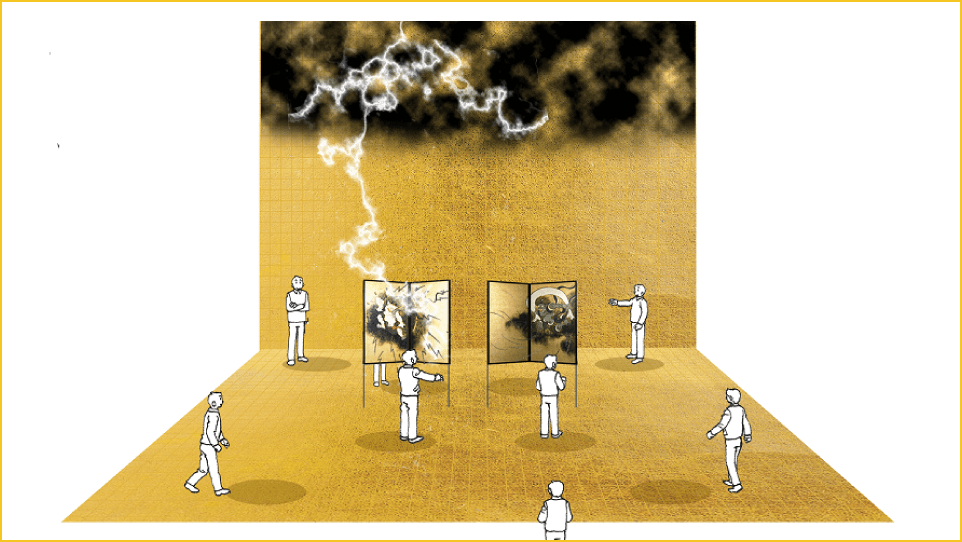
Contents Production: PROTOTYPE INC
A Live Performance by the Pine Trees
Pretend you’re walking through a forest of pine trees covered in a cold, damp, smoke-like fog under lightly falling snow. Listen to the wind and the sound of swaying pines in this one-of-a-kind performance.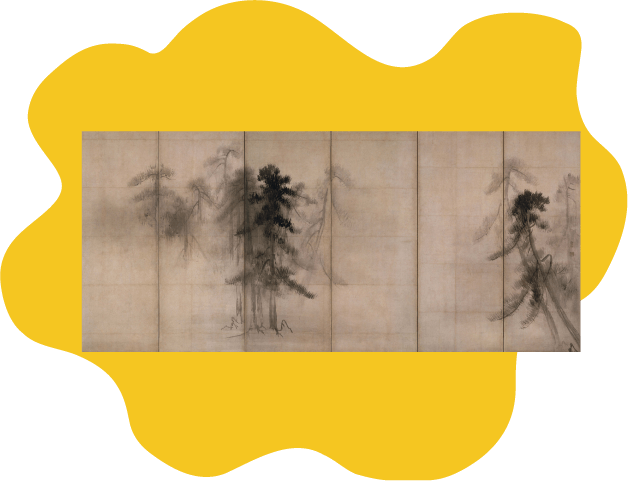
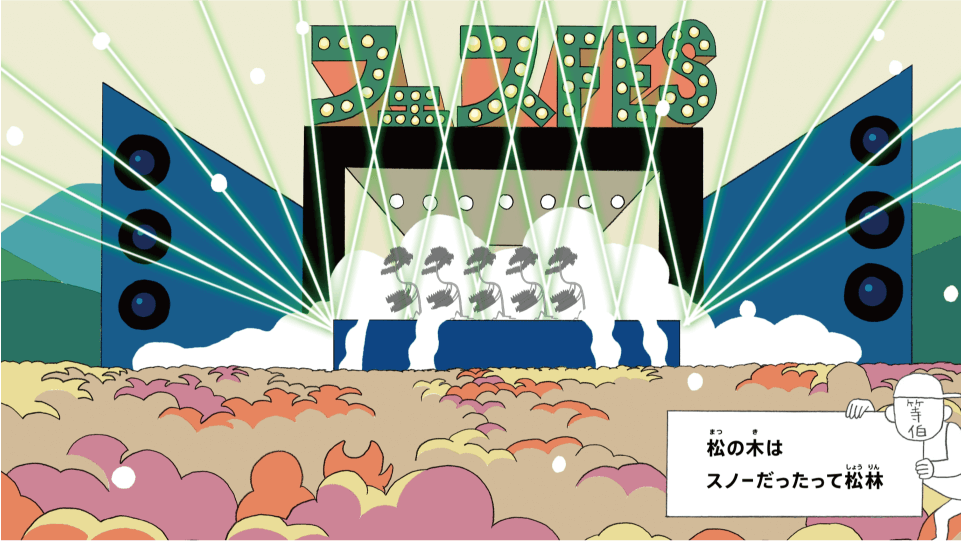

Contents Production: PROTOTYPE INC
The Tsuzuri Project (Project organizer: Kyoto Culture Association (NPO)/Partner organization : Canon Inc.) Production & DonationA Visit to the Writing Box with the Eight-Plank Bridge
Inside, water is flowing.
As you cross the bridge and enter the box,You will find a glittering world with irises blooming along golden riverbanks.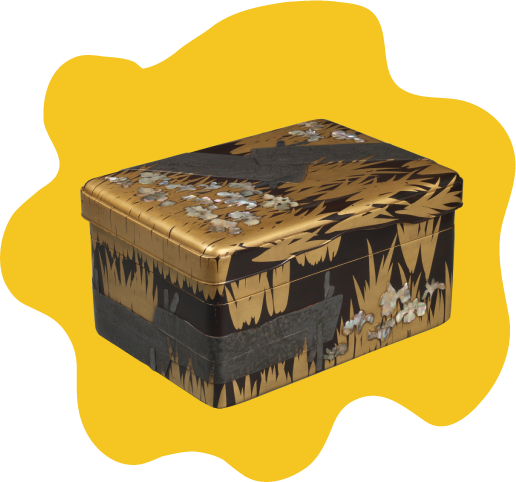
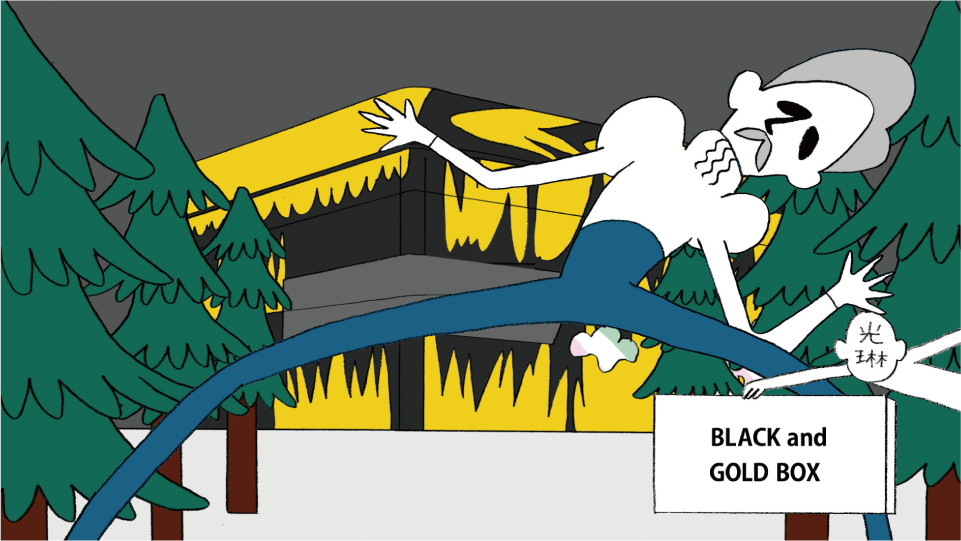
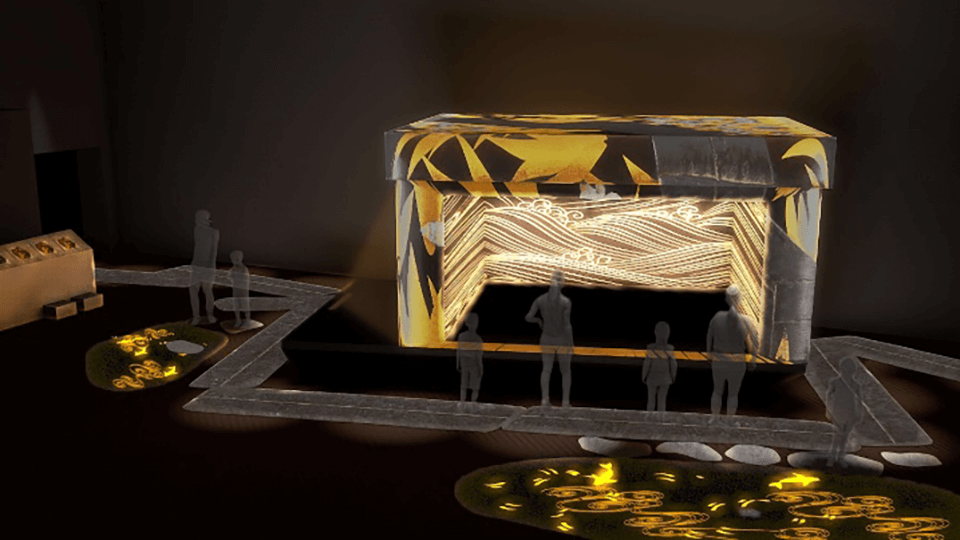
Contents Production: TOPPAN PRINTING CO., LTD.Japanese Lacquer Workshop
Adjust the size and position of each part to create your own original design.
Once your masterpiece is complete, you can exhibit it inside a virtual display case, or make it into a paper model.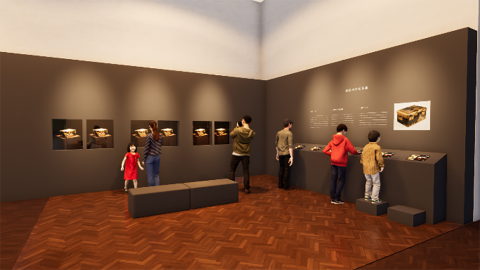
Contents Production: TNYU Inc.びじゅチューンの題材となったほんもの!!をみつけよう!
Important Cultural Property Flowering Plants of Summer and Autumn
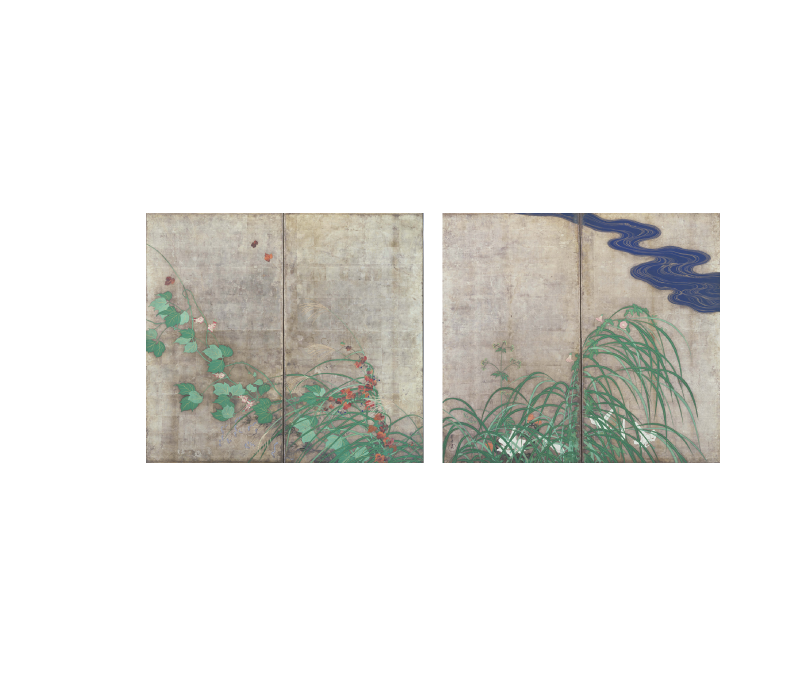
Flowering Plants of Summer and AutumnBy Sakai Hōitsu, Edo period, 19th centuryOverview
Flowering plants from summer and autumn are depicted on a silver backdrop reminiscent of moonlight. The screen to your right features summer plants like lilies and Japanese bindweed. The tips of their leaves dip toward the ground in a crest-fallen manner. Rainwater flows across the surface in the background. This device allows the painter to depict a sudden summer storm without drawing actual raindrops.
On the screen to your left, autumn plants like kudzu vines, thoroughworts, pampas grass and maples are blown from right to left by a strong wind. The sheer power of the wind is conveyed by the colors of the upturned leaves and the sight of maple leaves swirling in the air. The summer scene was originally painted on the back of Korin's Thunder God screen, with the autumn scene painted on the back of the Wind God screen. In other words, the summer plants are being battered by rains caused by the Thunder God, while the autumn plants are being blown about by gales whipped up by the Wind God.
Hoitsu's work mirrors Korin's in several other ways. While the former depicts earth using silver hues, for example, the latter depicts the heavens in a keynote gold. Hoitsu's admiration for Korin are in full display in these interplays.Noh Mask: Ko’omote
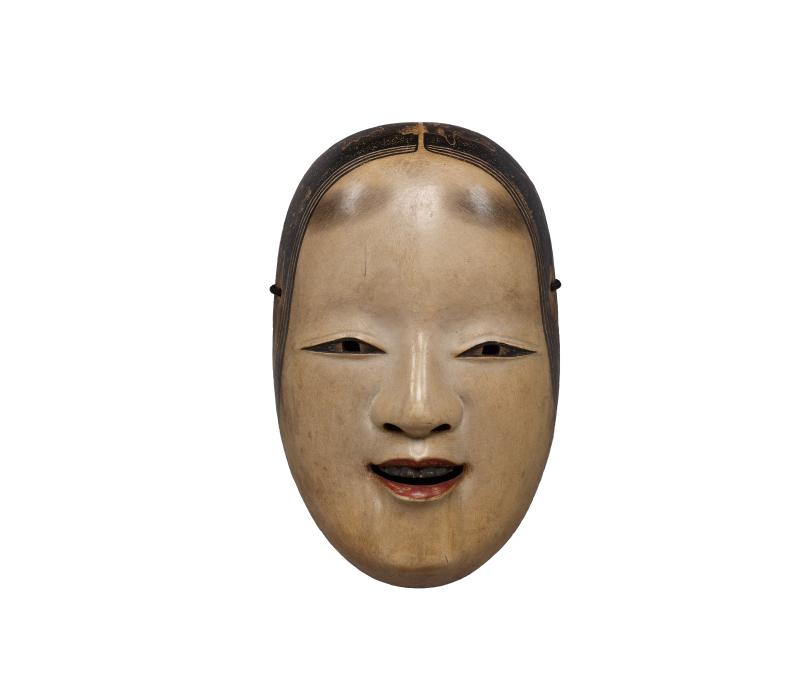
Tsunezumi", Edo period, 17th–18th centuryOverview

National Treasure Long Sword (Tachi), Named “Mikazuki Munechika”

Named “Mikazuki Munechika”By Munechika, Heian period, 10-12th century,
Donated by Watanabe SeiichirōOverview

National Treasure Writing Box with the Eight-Plank Bridge
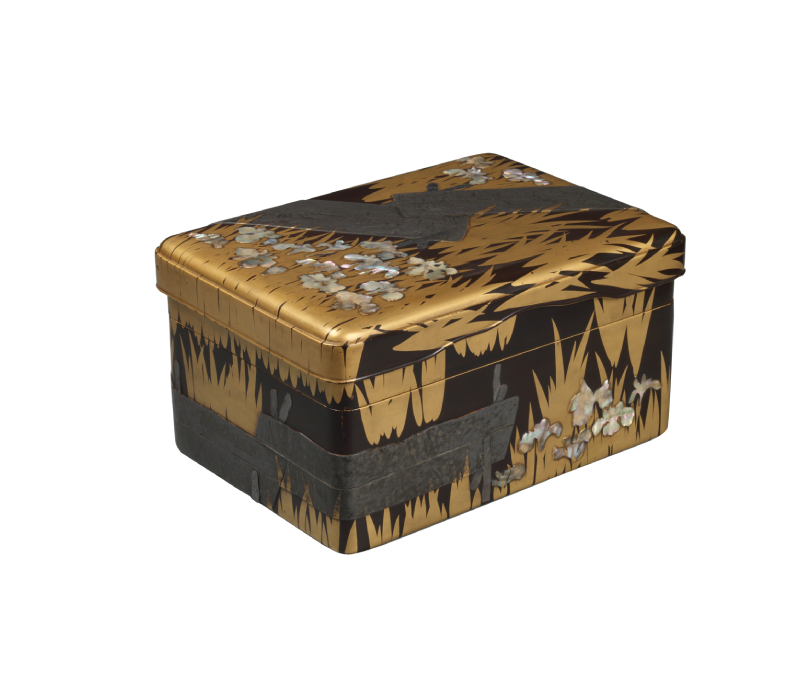
Overview
National Treasure Pine Trees
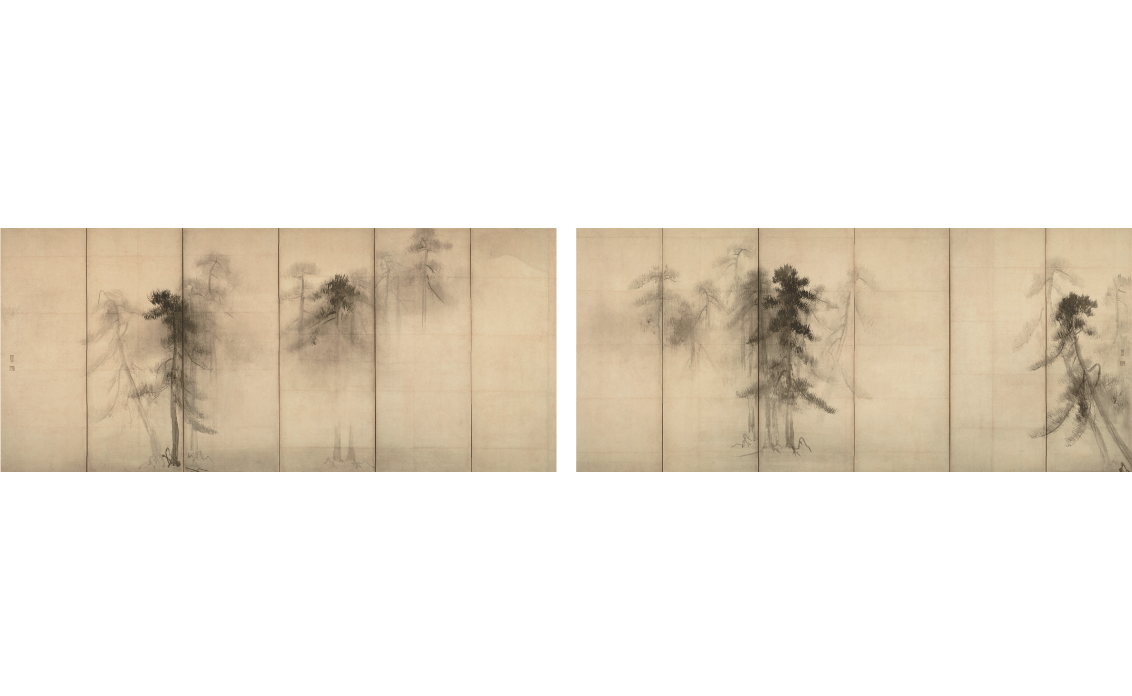
period, 16th centuryOverview
The painting seems to play tricks on our senses. Can you see the mist swirling and the light peeking out from the shadows? Can you hear the wind rustling through the pines? The painting's charm lies in the way the artist has faithfully captured the atmosphere of the scene rather than painstakingly trying to recreate the actual shape of the trees. This is also why the work has been described as the pinnacle of Japanese ink painting.
If you look closely, you can see the hazy outline of a snowy mountain behind the trees in the distance. Is this late autumn, with winter just around the corner? Or are we looking at spring, when the snow begins to melt? Some say the painting depicts a pine grove near the shore of the Noto Peninsula, Tohaku's home province. Others say it shows the Miho no Matsubara pine grove or the Amanohashidate sandbank, both subjects found in older Japanese paintings. Naturally, there is no right or wrong answer. Thoughts and feelings will differ from person to person, so take a good look and see what landscapes this painting conjures up in your mind.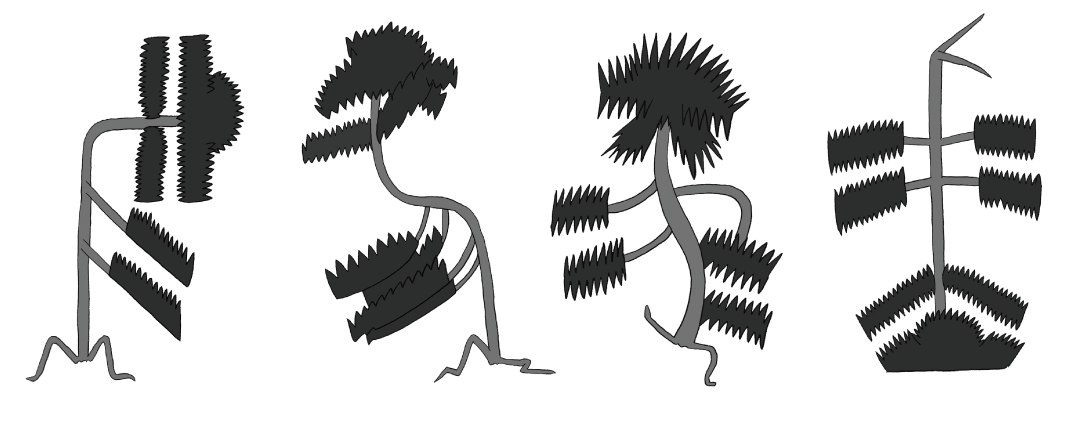
Important Cultural Property Queen Maya and Heavenly Beings
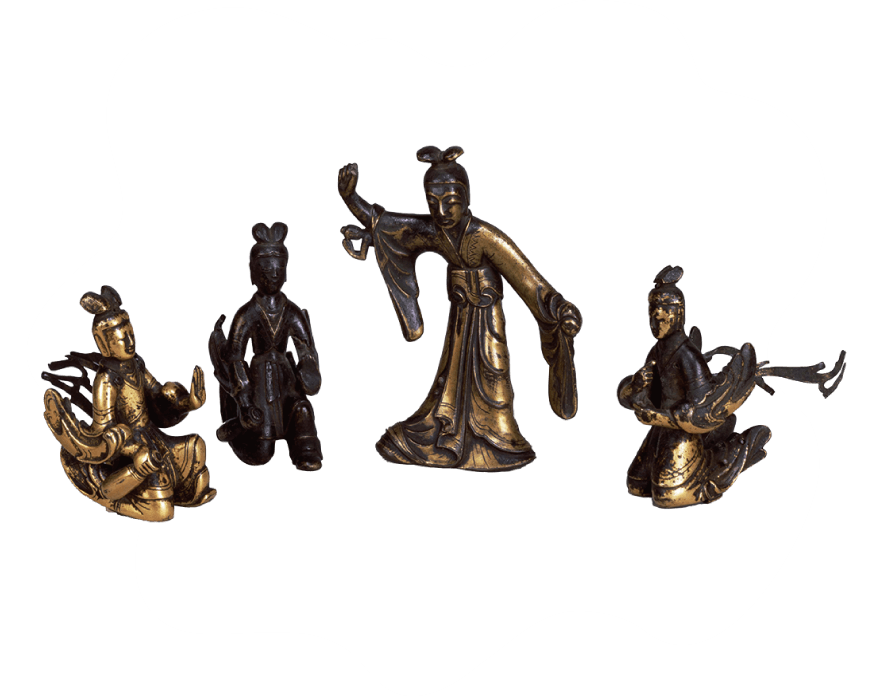
Queen Maya and Heavenly BeingsAsuka period, 7th centuryOverview
Maya holds her right arm upwards, her hand closed as if holding on to a branch. Her feet are placed firmly, and her left hand clenches the sleeve of her clothing, perhaps expressing the strength she is exerting as she gives birth. Looking at her right side, we can see the future Buddha being born, hands clasped in prayer. Around her are sculptures of celestial beings holding ewers and other items. These sculptures would have been used during the annual celebration of the birth of the Buddha on the eighth day of the fourth month. On this day, they would have been purified in a ceremony by having water and other liquids poured over them.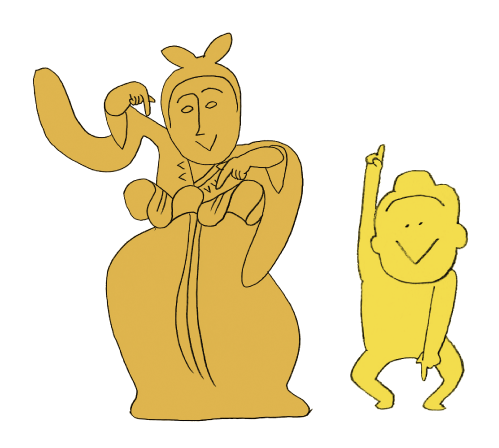
Important Cultural Property Lakeside
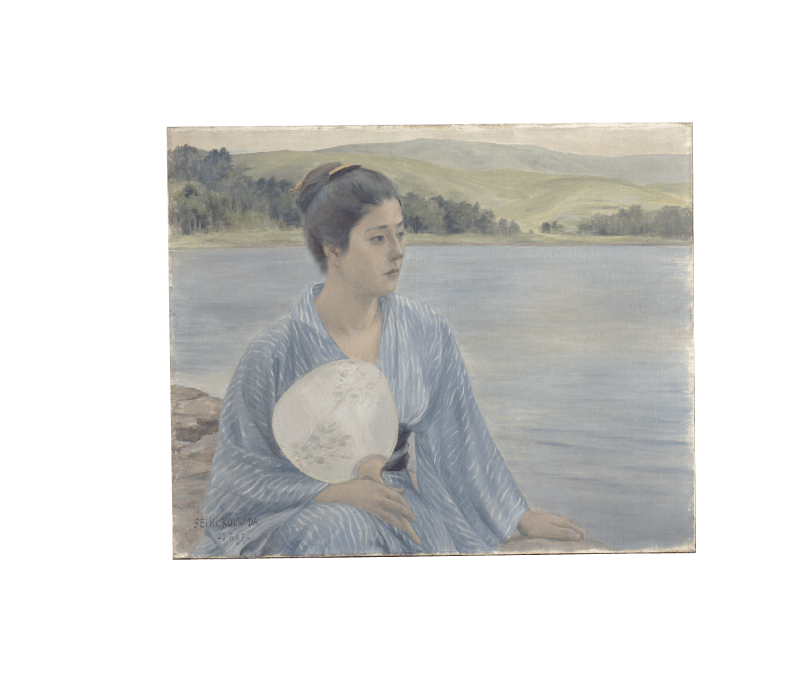
Tokyo National Research Institute for Cultural PropertiesOverview
Seiki Kuroda is known as a maestro in Japanese oil painting and studied painting in France. After he came back to Japan, he made a big change in Japan's oil painting circles. The bright representation created by changing light and air, which features Kuroda's works, was called "Shinpa" or "Murasakiha" and loved by many people.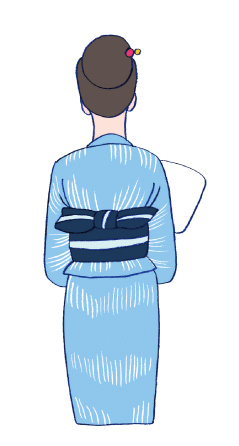
National Treasure Scenes In and Around Kyoto (Funaki version)
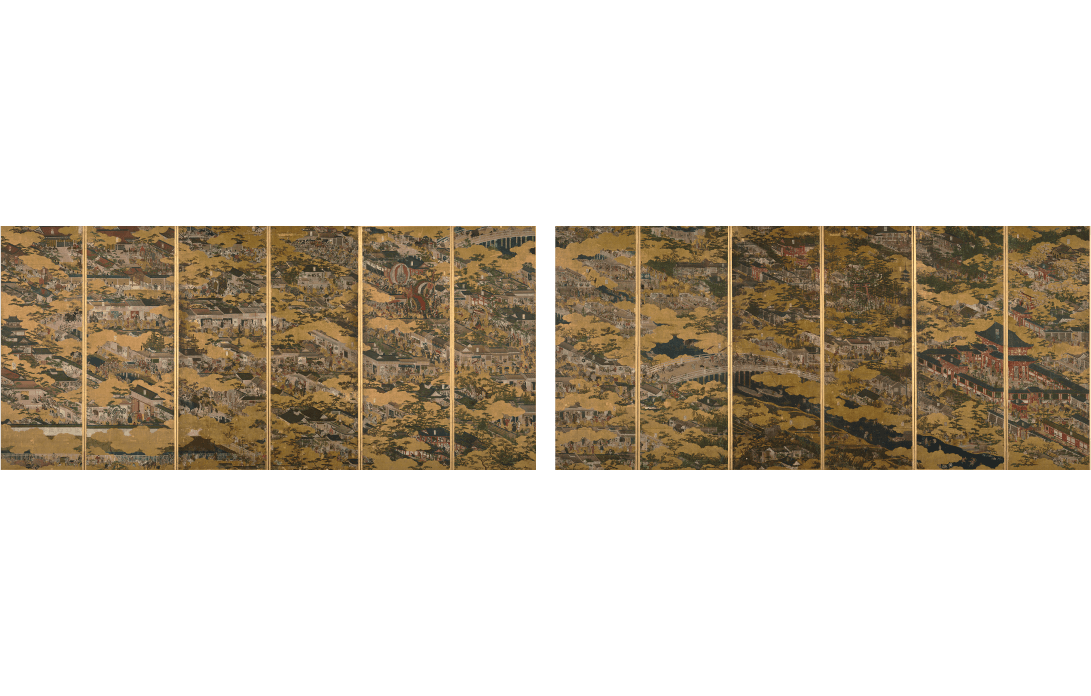
Overview
The scene is bustling with around 2,500 people, young and old, male and female. They are depicted enjoying themselves and going about their daily lives. Take a look at the large bridge slightly left of the center of the right-hand screen, for example. This is Gojo Ohashi Bridge. A riotous bunch of revelers is crossing the bridge, perhaps on the way back from cherry blossom viewing. The procession is led by dancing merrymakers who hold fans and cherry blossom branches. At the back, a drunken man is being held up on both sides. Under the bridge, surprised boatmen look up at the commotion. As we observe the children playing, the people arguing, and the expressions on each individual face, we are drawn deeper into the world of the screens.
It is also fun to try to spot famous landmarks and events that can still be found in Kyoto today. These include Sanjusangen-do Temple, Kiyomizu-dera Temple, Yasaka Shrine, and the Gion festival. These scenes were painted by Iwasa Matabei, a painter who was active from the Azuchi-Momoyama period to the start of the Edo period, around the late 16th century to early 17th century, in places like Kyoto, Fukui, and Edo, as Tokyo was formerly known. Matabei was renowned for his vibrant portrayals of people, as this work amply testifies.Tickets
Admission
University Students: 500 yen
High/Junior High/Elementary School Students and persons under 18 and over 70: Free
* Persons with disabilities are admitted free of charge along with one attendant. Please show official ID or other documentation.
* Regular admission is free for persons under 18 and over 70. Please show proof of age (driver's license, passport, etc.) when entering.General Information
Getting Here, Admission & Hours
Period
Tuesday, October 27 - Sunday, December 6, 2020
Venue
Room T5 & T4, Honkan
Hours
9:30 - 17:00, Fridays and Saturdays until 21:00 Last entry 30 minutes before closing.
Closed
Mondays (Except for November 23) and November 24
Organizers
Tokyo National Museum, National Center for the Promotion of Cultural Properties, NHK
General Inquiries
03-5777-8600 (Hello Dial)
Access
10 minutes' walk from JR Ueno Station (Park exit) and Uguisudani Station
15 minutes' walk from Keisei Ueno Station, Tokyo Metro Ueno Station and Tokyo Metro Nezu Station
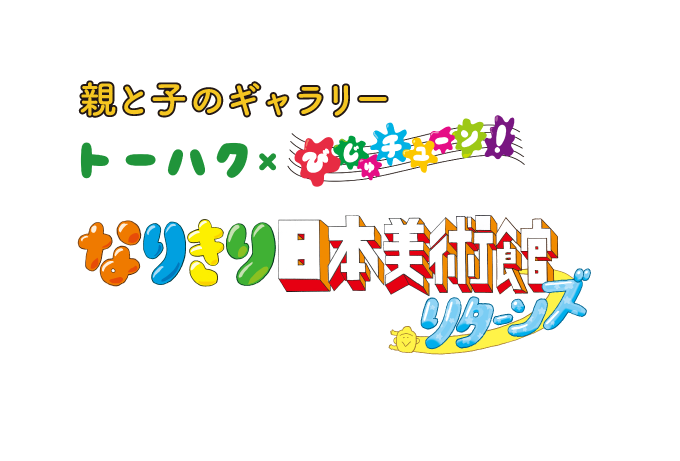

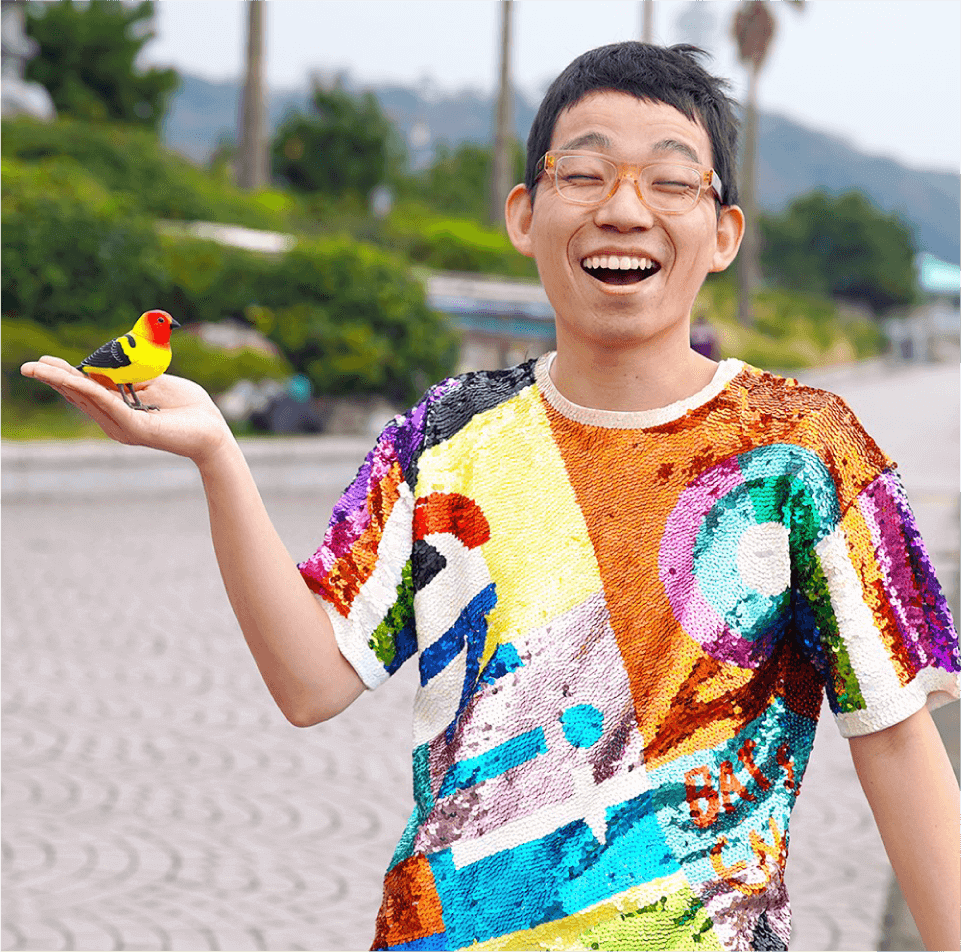

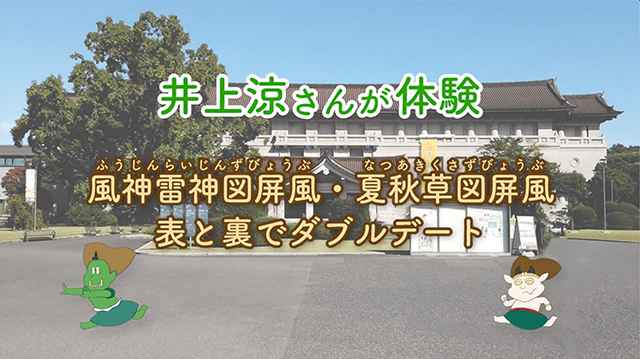
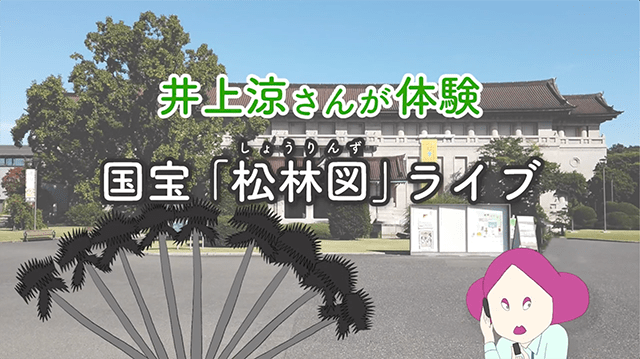
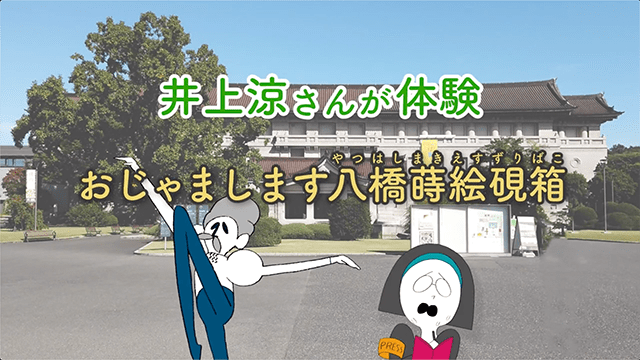

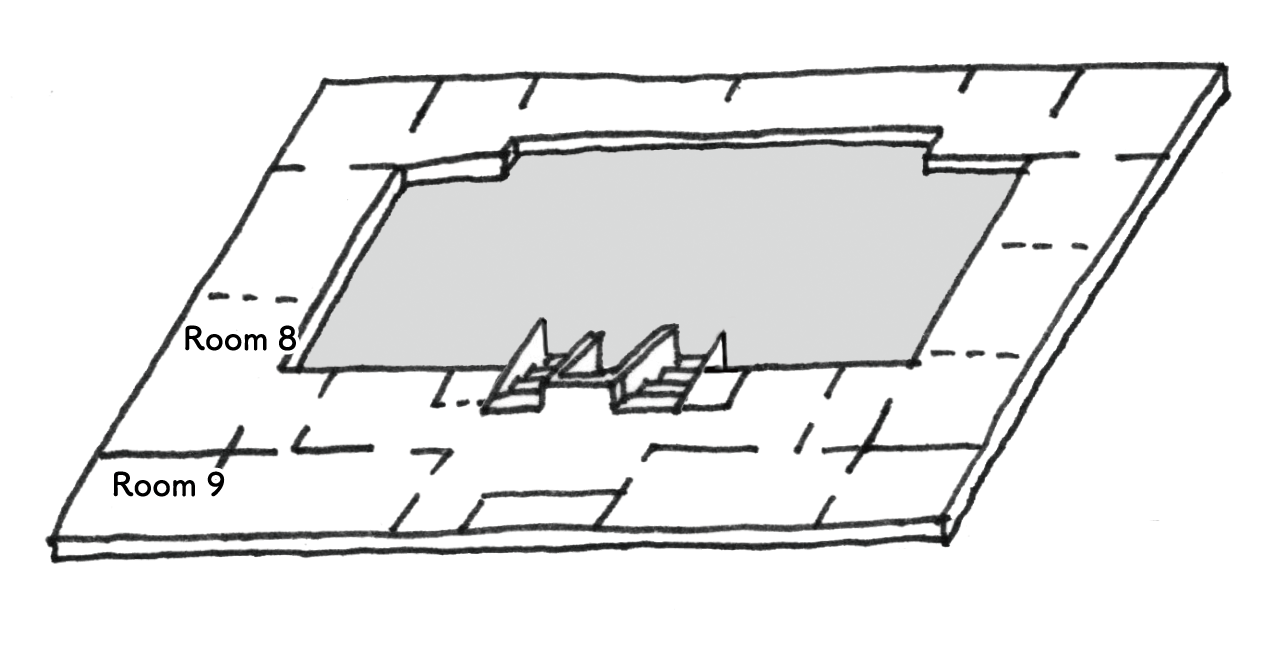

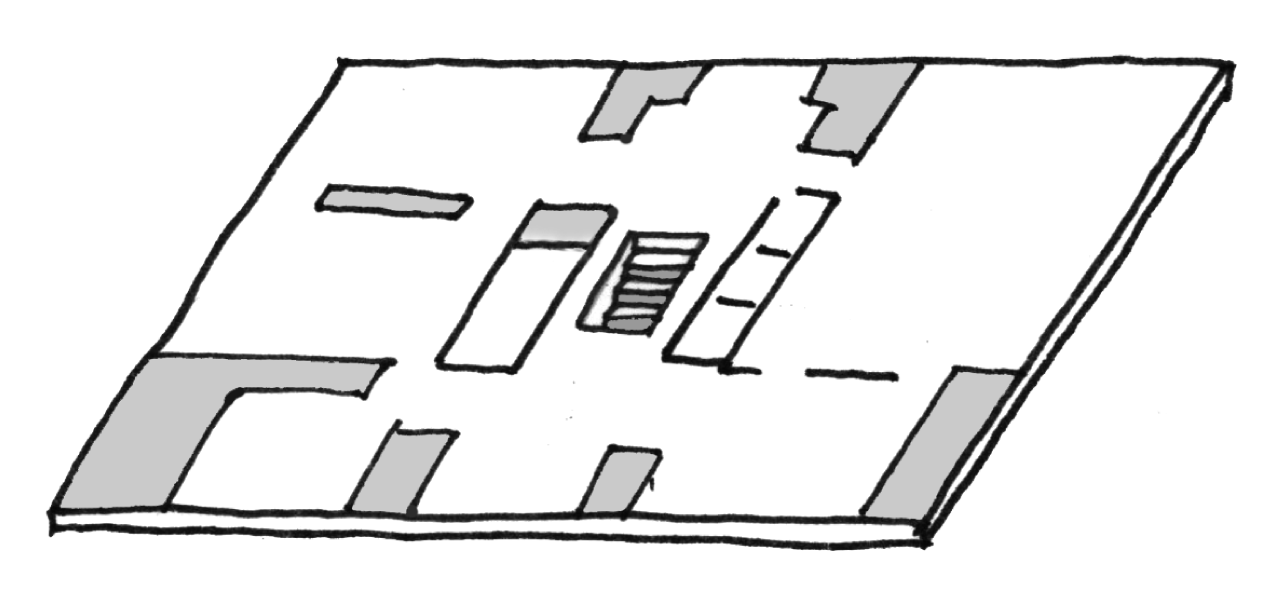
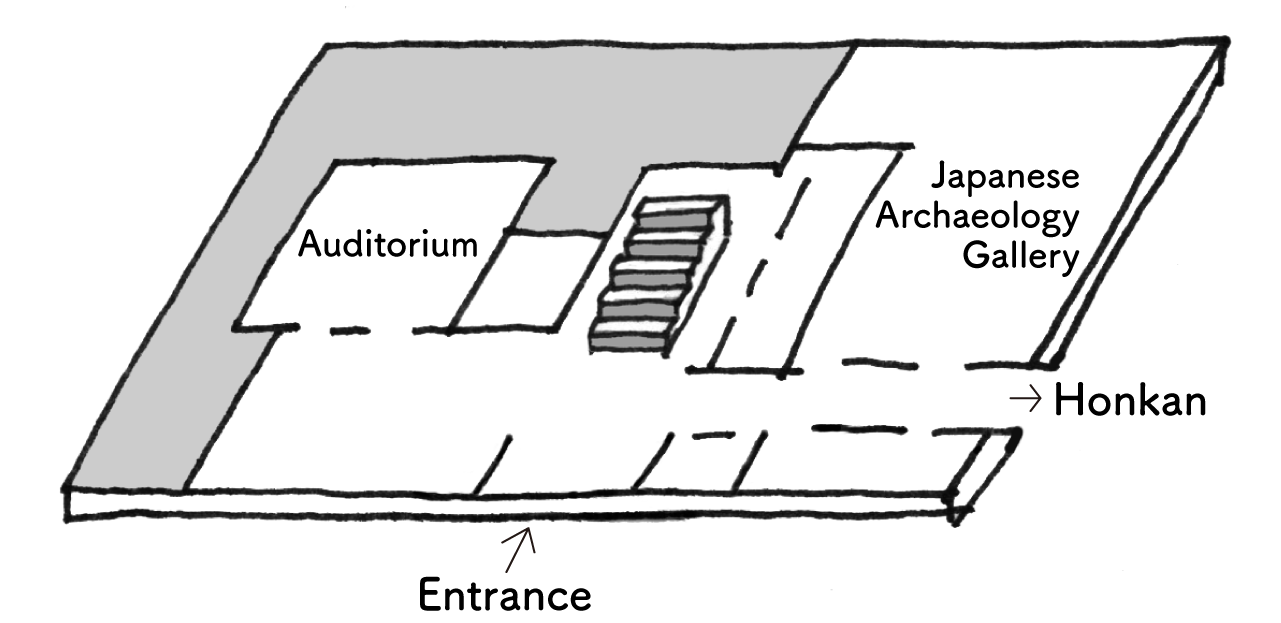
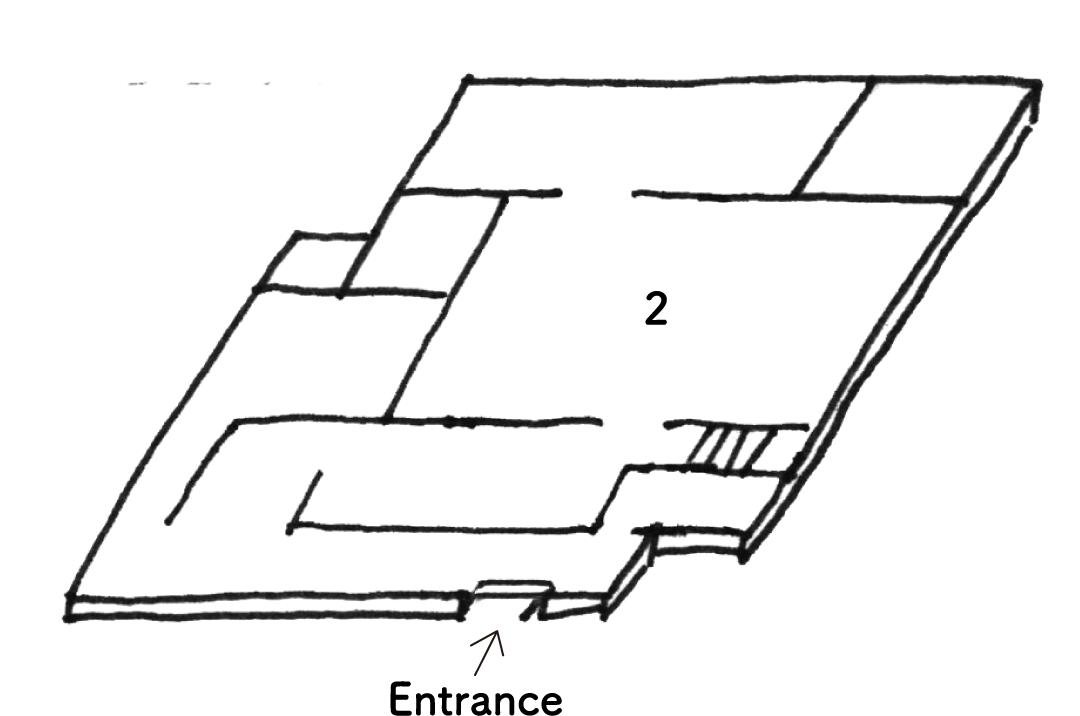
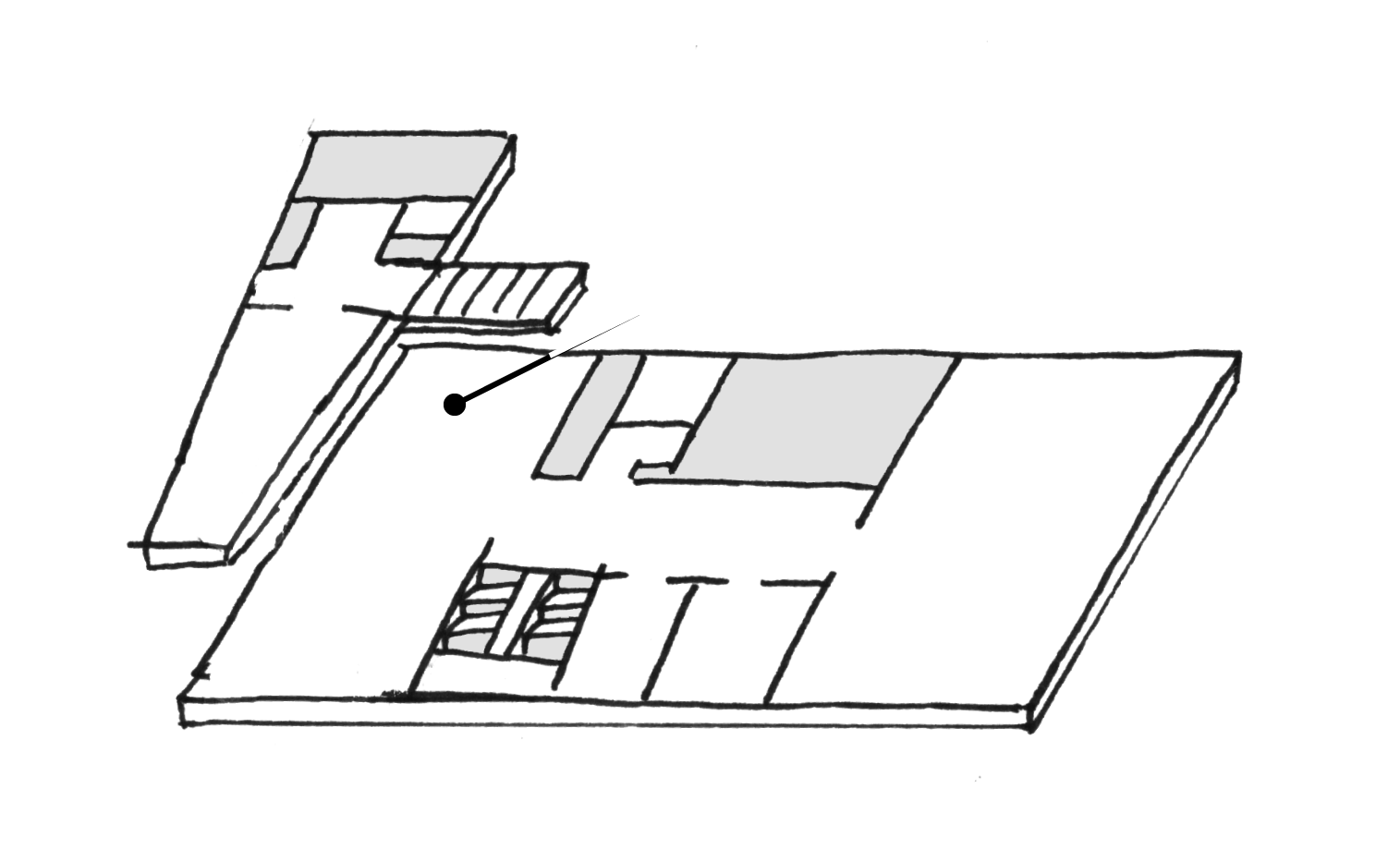


The upper tier of this writing box holds an inkstone and a water dropper, while the lower tier is used for storing paper. An uneven bridge made of wooden planks zig-zags across the box's surface. Groups of blooming irises also adorn each side. These are differentiated by positioning and the number of flowers. These motifs cover the entire outer surface, apart from the base. The design seems quite bold, yet also carefully planned.
Flattened pieces of mother-of-pearl are used for the iris blossoms, while the leaves and stalks were drawn in lacquer, with gold powder sprinkled on top before the lacquer dried. The design seems quite audacious, but it is actually the product of traditional lacquerware techniques.
The plank-bridge and irises represent Yatsuhashi, or the “Eight-plank Bridge,” a location in eastern Aichi prefecture that is famously referenced in The Tales of Ise, a classic of Heian-period literature.
The artist Ogata Korin was active from the end of the 17th century to the start of the 18th century. As epitomized by this writing box and his famous painting depicting the Eight-plank Bridge, Korin took traditional motifs from classical literature and reframed them through the prism of his own refined sensibilities.